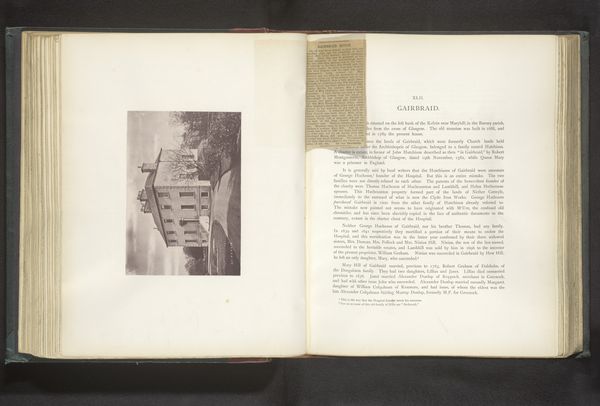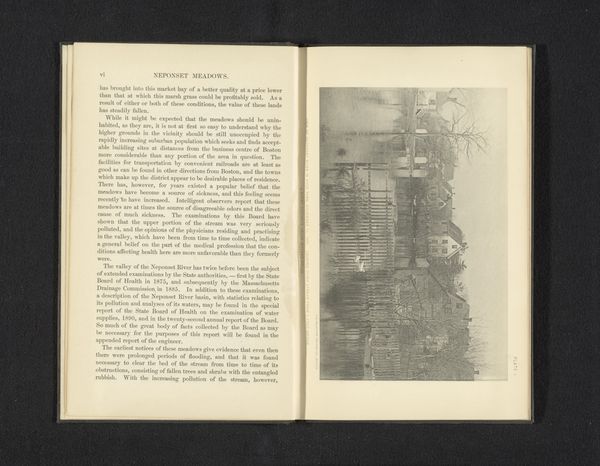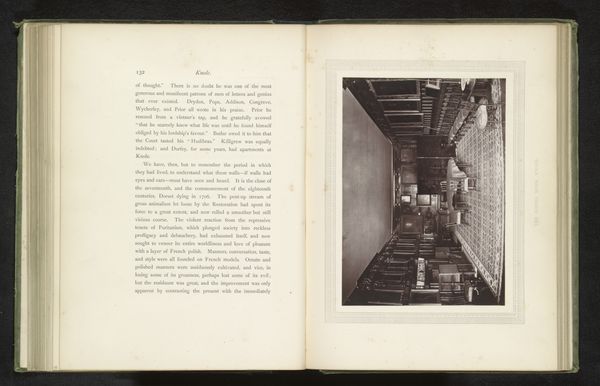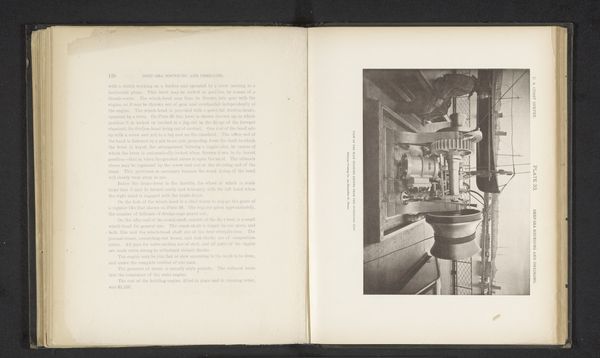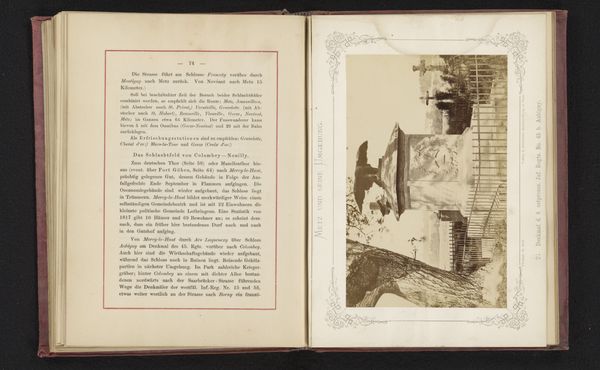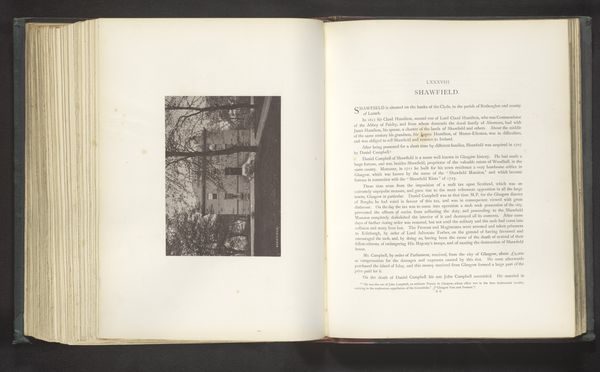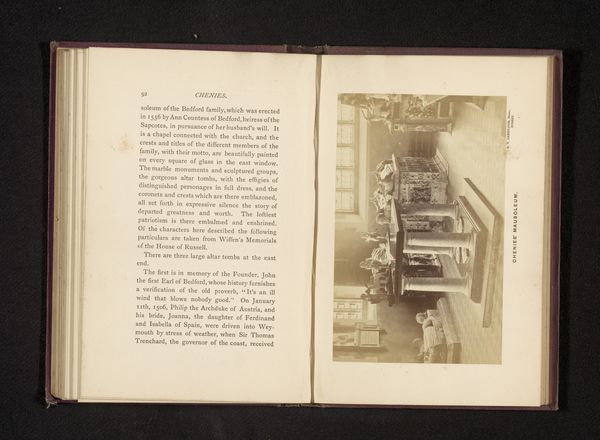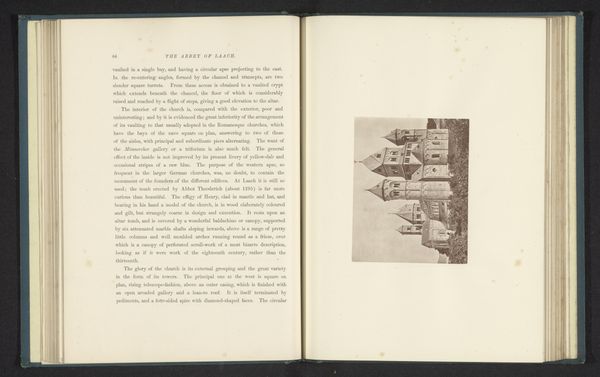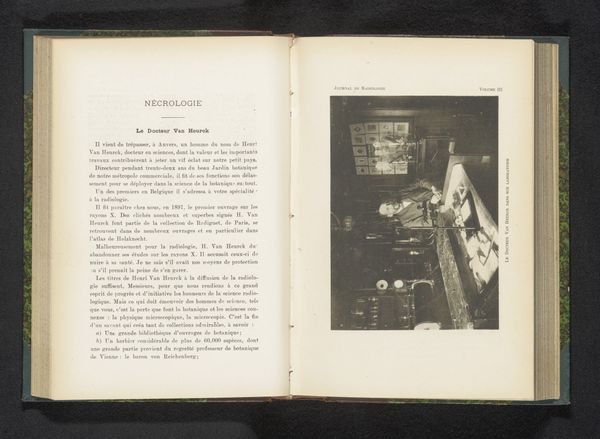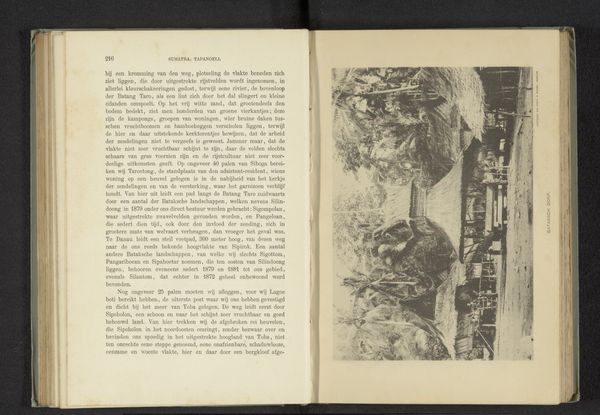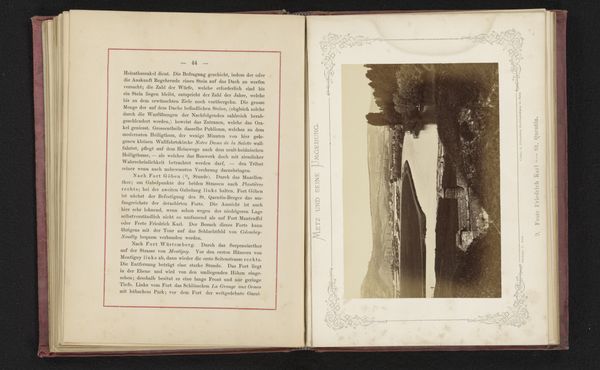
print, photography, albumen-print
# print
#
landscape
#
photography
#
albumen-print
Dimensions: height 147 mm, width 185 mm
Copyright: Rijks Museum: Open Domain
Curator: Here we have a remarkable interior shot titled "Interieur van de danszaal van Knole House." The albumen print, dating from before 1876, is attributed to Stephen Thompson and is part of a larger album. Editor: Immediately, I'm struck by the photograph's stark tonality, the blacks leaning almost into charcoal. There's a fascinating push and pull in the composition, leading the eye up and into the receding space. It really does look palatial, even in miniature, and quite cold somehow, almost uninhabited. Curator: That "coldness" might stem from the absence of figures but also perhaps the history that resonates from Knole House. Its very walls seem saturated with narratives. Grand estates are a potent visual signifier of lineage, legacy and power. Can't you almost sense the cultural memory within the room? Editor: It is certainly powerful in its rendering of depth; that chandelier, frozen above in space, adds so much to the geometry! I find it interesting how the structure itself overwhelms the possibility of real people within it; there is no domestic warmth or lived-in feeling, really, at least not as rendered by the photographer. Curator: You see the coldness, I sense resilience—the architecture enduring and preserving cultural significance, even adapting through generations. I suspect the portraits hanging along the wall contain numerous unspoken tales; what narratives do they suggest? Are they a show of authority or an elegy to the family’s past? Editor: Or merely another part of the overall design! It's that meticulous geometric layout that really holds the image for me, the repetition of forms building a certain harmony. To me, Thompson’s work hinges on such semiotic frameworks of dark/light values and the relationships implied between elements—that doorway, the tables… Curator: Agreed; but the building’s occupants imprint something invisible too, a resonance upon the materials over time. Such photographs capture something of their unseen presences within those material possessions, offering hints of what was… and hints about what might never be again. Editor: Maybe. But without understanding Stephen Thompson's technique—his use of lighting, contrast, and his placement of the camera—the cultural inferences mean nothing! His aesthetic choices, not history itself, make it resonate now.
Comments
No comments
Be the first to comment and join the conversation on the ultimate creative platform.

